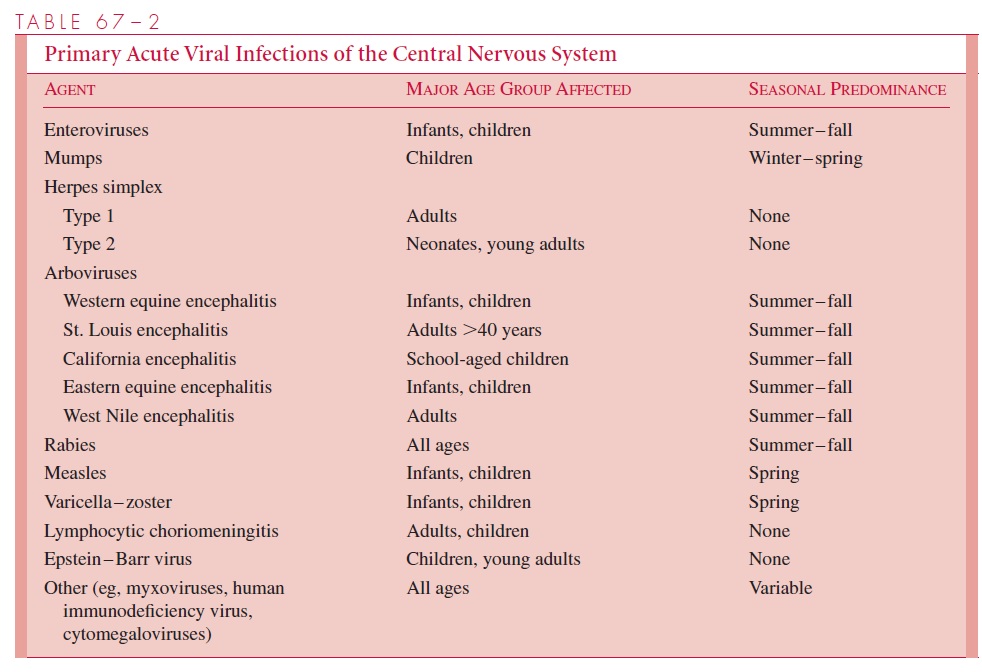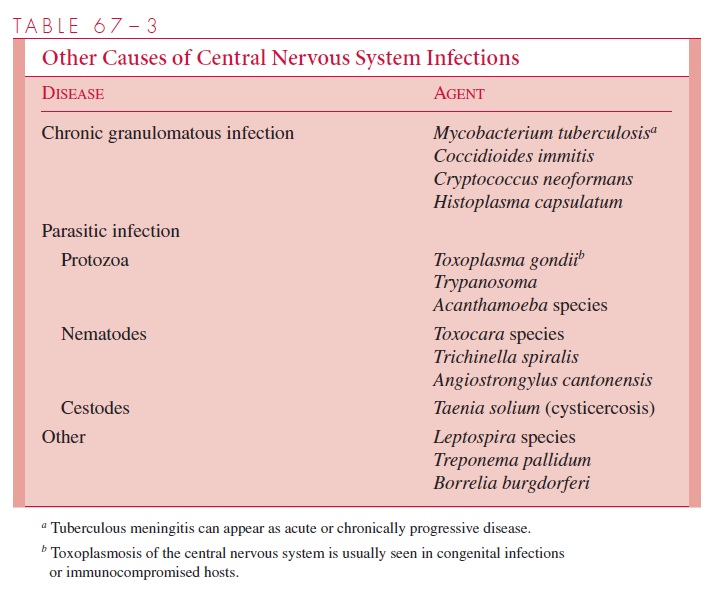Chapter: Medical Microbiology: An Introduction to Infectious Diseases: Central Nervous System Infections
Common Etiologic Agents - Central Nervous System Infections
COMMON ETIOLOGIC AGENTS
The causes of CNS infections are numerous, as illustrated in Tables 67–1 through 67–3. Acute purulent meningitis is usually caused by one of three organisms: H. influenzae type b, N. meningitidis, or S. pneumoniae. The incidence of H. influenzae meningitis has now fallen sharply in the United States as a result of routine immunization. In neonatal infec-tions, group B streptococci orEscherichia coli are most frequently implicated. However, many other bacteria can occasionally cause the disease if they gain access to the meninges.

Of the viral causes of acute CNS disease, the categories most commonly encountered are the enteroviruses, human immunodeficiency virus, herpes simplex, Epstein–Barr virus, and arthropod-borne viruses. In the United States, enteroviruses account for the greatest proportion of infections. Viral CNS infections can be manifested clinically as aseptic meningitis, encephalitis, or poliomyelitis. The age of the patient and the season of occurrence help somewhat in predicting some of the agents that may be involved, (see Table 67–2); other epidemiologic, ecologic, and clinical factors associated with these infections.

Slow viral infections of the CNS, such as subacute sclerosing panencephalitis (due to measles or sometimes congenitally acquired rubella virus), acquired immunodeficiency syndrome encephalopathy, progressive multifocal leukoencephalopathy (due to JC poly-omavirus), and Creutzfeldt–Jacob disease (“unconventional” viruses). Other important causes of CNS infections (see Table 67–3) that must not be overlooked include Mycobacterium tuberculosis and the deep mycoses (especially Cryptococcus neoformans andCoccidioides immitis). These chronic infections can be insidious in onset and mimic other processes, thus delaying consideration of the proper diagnosis.

Finally, there are noninfectious causes of CNS disease to be considered in the differ-ential diagnosis. These include (1) metabolic disturbances, such as hypoglycemia, dia-betic coma, and hepatic failure; (2) toxic conditions, such as those caused by bacterial toxins (diphtheria, tetanus, botulism), insect toxins (tick paralysis), poisons (lead), and drug abuse; (3) mass lesions, such as acute trauma, hematoma, and tumor; (4) vascular lesions, such as intracranial embolus, aneurysm, and subarachnoid hemorrhage; and (5) acute psychiatric episodes.
Related Topics